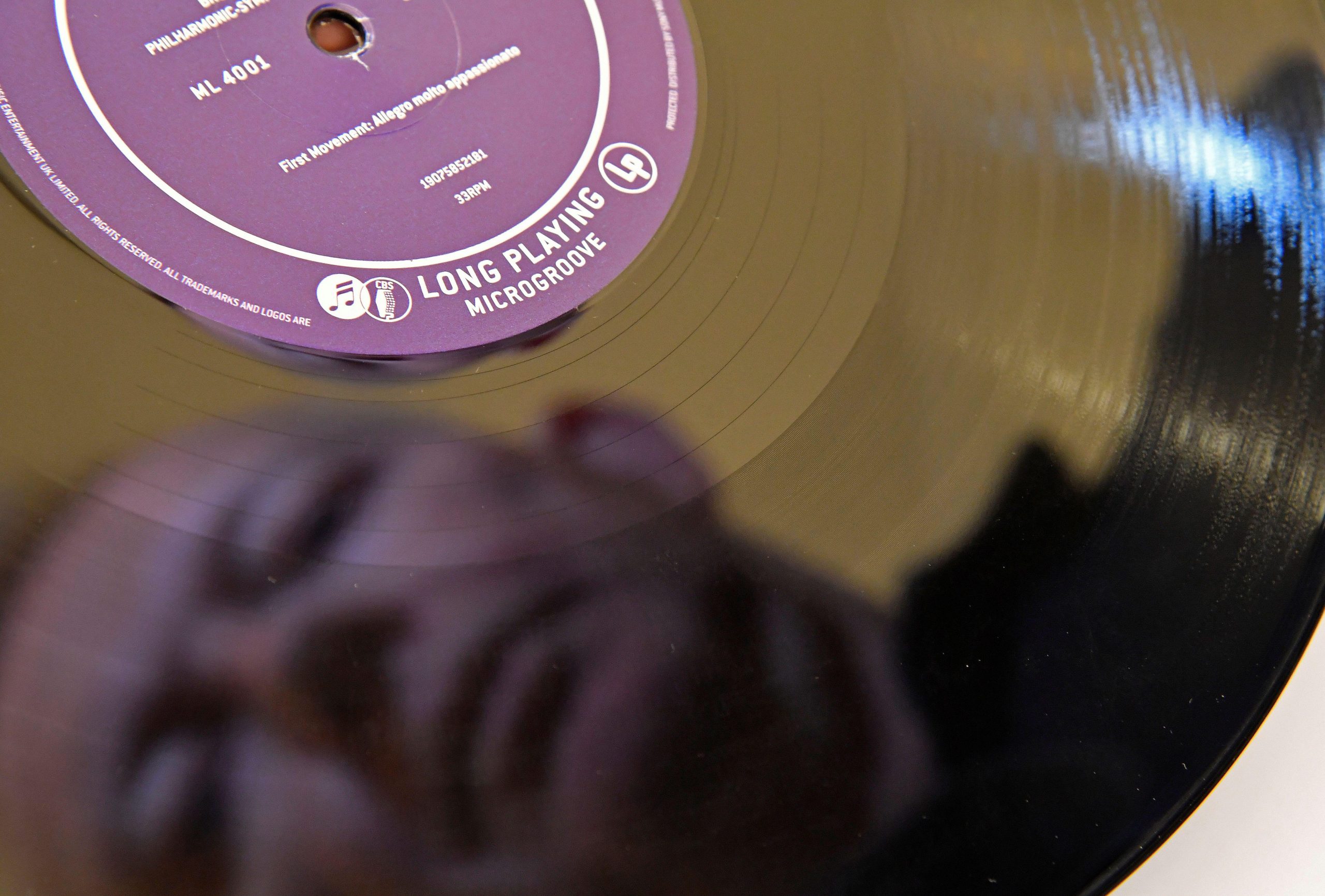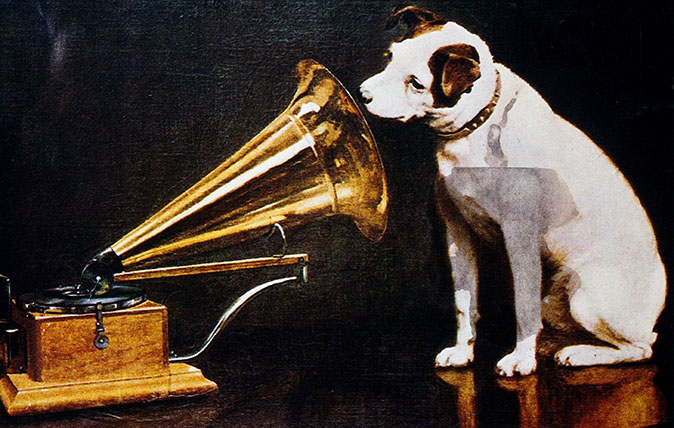Curious Questions: What was the first ever vinyl LP?
Music-lovers who replaced their records with CDs three decades ago can still barely believe vinyl's unlikely resurgence — but the fresh interest in this old medium is still going as the first ever vinyl LP turns 75. Martin Fone charts the history of vinyl long-play records.


Ever since the release in Japan of Billy Joel’s 52nd Street on October 1, 1982, the first commercially available compact disc (CD), vinyl records have been locked in an existential struggle. Digital formats might offer a cleaner listening experience, be more convenient to store, and well-nigh indestructible, but for many audiophiles a vinyl record feels more tangible and ‘alive’ and is better at picking up the subtle nuances that are often lost or muddied in compressed digital recordings. For the romantic each hiss, crackle, and scratch on a vinyl record evokes a memory.
In a surprising but welcome turn of fortunes, the sales of vinyl in the UK in 2022 exceeded those of CDs for the first time since 1988, a revival fuelled in part because some major artists, such as Taylor Swift and Harry Styles, have deliberately chosen to record in that format. It is timely too as 2023 marks the seventy-fifth anniversary of the long-playing record — or the vinyl LP, as it's universally known.
Inspired by some drawings of the human auditory system, a French printer of scientific works named Edouard-Leon Scott worked on a device designed to capture the human voice mechanically. He succeeded in 1853 by replacing the tympanum with an elastic membrane in the shape of a horn and the ossicle with a series of levers which moved a stylus backwards and forwards across a glass or paper surface blackened by smoke from an oil lamp.
Although Scott received a patent for his ‘phonautograph’ on March 25, 1857, it was not a commercial success as the sound, rendered into a series of squiggles, could not be played back. It was not until 2008 when a team from Lawrence Berkeley National Laboratory succeeded in converting a phonautograph he had recorded on April 9, 1860, into a digital audio file that the true extent of his achievements was appreciated. Scott was heard singing, very slowly, a twenty-second snatch of Au clair de la Lune, predating Thomas Edison’s recording of Mary had a Little Lamb by some seventeen years.
Although Scott went to his grave convinced that Edison had wrested some of the glory that was rightfully his, the American inventor took the concept of voice recording forward by devising a system that played back sounds that had been recorded by transferring it to an embossing point and then, initially, on to paraffin paper and later a spinning cylinder wrapped in tin foil.
Scientific American, in its edition of December 22, 1877, reported that Edison had visited their office and ‘placed a little machine on our desk, turned a crank, and the machine enquired as to our health, asked how we liked the phonograph, informed us that it was very well, and bid us a cordial good night’. Edison’s patent (No 200,521), awarded on February 19, 1878, specified a particular method, embossing, for capturing sound on cylinders covered with tin foil. It was to prove to be his favourite invention.
In 1889 two competing recording formats emerged, the all-wax cylinder, used in Edison’s ‘Perfected Phonograph’ and the Gramophone, the world’s first record player, patented by German-born US inventor, Emile Berliner. Both formats were able to reproduce about two minutes’ worth of professionally made pre-recorded songs, instrumentals, and monologues, and while the Phonograph allowed the owner to record their own music too, the Gramophone was louder.
Exquisite houses, the beauty of Nature, and how to get the most from your life, straight to your inbox.
Cylinders played at 120 revolutions per minute (rpm), later increasing to 200 rpm to improve volume and squeeze in more material, whereas Berliner’s hand-cranked seven-inch records made from vulcanised rubber operated at a statelier speed, between sixty and 75 rpm.
Despite its fragility, the introduction of shellac, a resin derived from female lac beetles, which allowed more grooves to be cut into the record, started to swing the pendulum in the gramophone’s favour, cemented by the launch of the Red Seal label in 1903 featuring ten-inch shellac records playing at 78 rpm. It was a format that was to serve music lovers for almost five decades. Cylinders were quietly dropped from around 1912, although Edison supported them until 1929.
Flexible plastic discs made from Polyvinyl chloride (PVC or vinyl) were sent to radio broadcasters in the 1930s as they were more robust and produced better, more consistent sounds than shellac records, but they were not commercially available, the aftermath of the Great Depression dampening down the appetite amongst companies and consumers alike for technological innovation. However, a combination of a shortage of shellac after the Second World War and the development of the microgroove system in 1947 by Peter Goldmark and his team at Columbia Records set the stage for the next revolution in record production.
In 1948 the engineers at Columbia had developed a twelve-inch long-playing record, spinning at 33 and 1/3 rpm and holding about twenty-three minutes’ worth of music on each side. The first demonstration disc, ML4001, featured Mendelssohn’s Violin Concerto in E minor played by the Philharmonic Symphony Orchestra of New York (now known as the New York Philharmonic) under the baton of Bruno Walter.

Other early offerings included 12-inch discs featuring Gershwin’s Rhapsody in Blue and Greig’s Piano Concerto in A with Oscar Levant at the piano, Beethoven’s Fifth Symphony, favourites from Bizet’s Carmen, and ballet suites from Tchaikovsky’s Nutcracker and Khatchaturian’s Gayane. The collection was completed by two ten-inch records featuring a selection of Strauss waltzes and the music of Stephen Foster. Ten thousand of each of the albums were sent to Columbia’s distributors in readiness for the launch on June 21, 1948. The LP era had begun.
The Columbia Catalogue for 1949 waxed lyrical about its innovation, pointing out that their LP records played approximately six times more music than conventional shellac records allowing the listener to enjoy the world’s greatest music in one sitting, and that they were much more robust. ‘Each LP record’, it trilled, ‘consists of scores of microscopically fine grooves, precisely controlled channels capable of capturing the most subtle nuances or most magnificent fortissimi’.
Columbia Records, though, did not have everything their own way, with RCA Victor introducing their own LP format shortly afterwards, just seven inches in diameter and revolving at 45 rpm. Over the next two years the companies battled it out in what was dubbed ‘The War of the Speeds’, but eventually the twelve-inch revolving at 33 and 1/3 rpm settled down to become the predominant format for albums and the seven-inch 45 rpm disc for singles and extended play records (EPs).
The advent of stereophonic recordings in the 1960s and the phasing out of mono sound in 1968 heralded the heyday of the vinyl, allowing contemporary musicians, arguably, to push the boundaries of musical creativity.
Vinyl might have been eclipsed by other formats, but its flame has been kept alive by many including Britain’s vinyl collecting community, of whom, a recent Royal Mint survey into collecting habits revealed, 32% live in Glasgow. The format’s renaissance suggests that their faith was justified, and plans are underway, in the year that the vinyl LP celebrates its diamond anniversary, to hold the world’s first festival designed purely for vinyl enthusiasts in Haarlem in the Netherlands.
The vinyl revolution is not over.

Credit: Alamy Stock Photo
Curious questions: Do dogs like listening to music?
As a nation of dog lovers, we’ve already seen home-cooking for canines, ‘pup cakes’ and Pawsecco. Now, we’re composing music
After graduating in Classics from Trinity College Cambridge and a 38 year career in the financial services sector in the City of London, Martin Fone started blogging and writing on a freelance basis as he slipped into retirement. He has developed a fearless passion for investigating the quirks and oddities of life and discovering the answers to questions most of us never even think to ask. A voracious reader, a keen but distinctly amateur gardener, and a gin enthusiast, Martin lives with his wife in Surrey. He has written five books, the latest of which is More Curious Questions.
